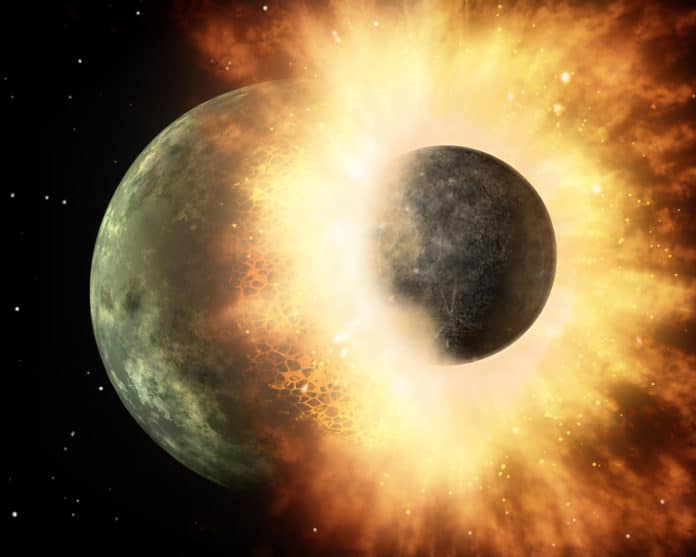According to the giant-impact hypothesis or Theia Impact, the Moon Moon formed from the ejecta of a collision between the Earth and a protoplanet called Theia about 4.5 billion years ago.
A team of scientists recently suggests that the Earth’s core may bury the Theia’s fragments.
Theories related to what happened to the rest of Theia are still being argued. In this new study, scientists suggest that much of Theia’s mantle wound up in Earth’s mantle, forming what is now called the large low-shear-velocity provinces, LLSVPs—one beneath parts of the African continent and one beneath the Pacific Ocean.
These two blobs are up to 1000 kilometers tall and several times that wide. Seismic waves from earthquakes abruptly slow down when they pass through the layers. It means the blobs are relatively denser and chemically different from the surrounding mantle rock.
Theia’s mantle was denser than Earth‘s. Any of its fragments that made its way to the mantle gradually reached Earth’s core.
Scientists built a model to determine what could have happened if there were a collision with a planet the size of Mars or even larger. The model depicts Earth as it was 4.5 billion years ago. It suggests that after the collision, Theia’s core would have quickly merged with Earth’s. Over billions of years, the fragments merge, forming the LLSVPs.
Jennifer Jenkins, a seismologist at Durham University, said, “If Theia’s remnants do lie deep in Earth’s mantle, they may not be alone. Seismologists increasingly see small, ultradense pockets of material in the deep mantle, only a few hundred kilometers across, often near the RSVPs’ edges. Maybe they are the sunken remnants of iron-rich cores from other miniature planets that hit early Earth.”
Journal Reference:
- Q. Yuan et al. Giant impact origin for the large low shear velocity provinces.
